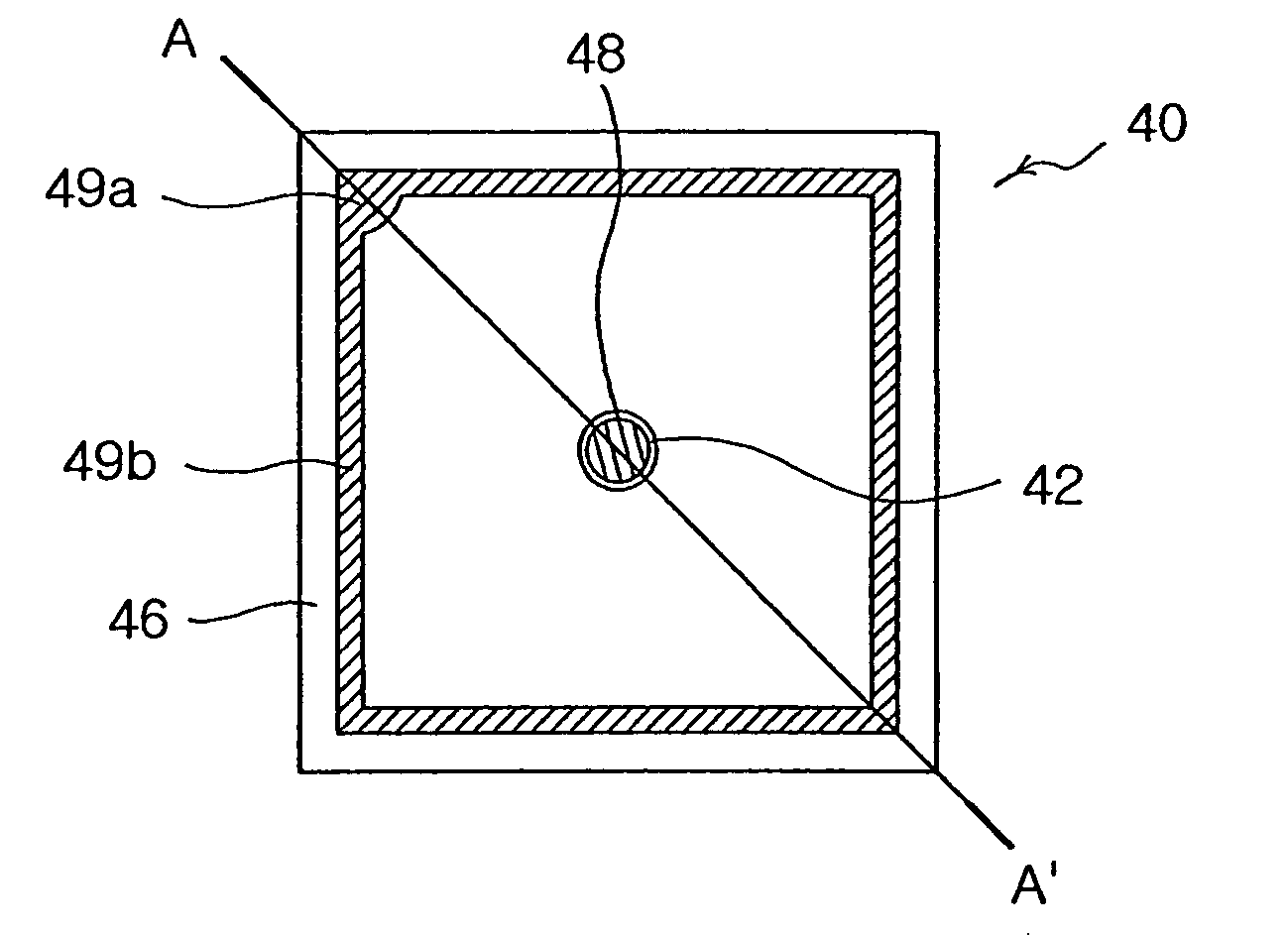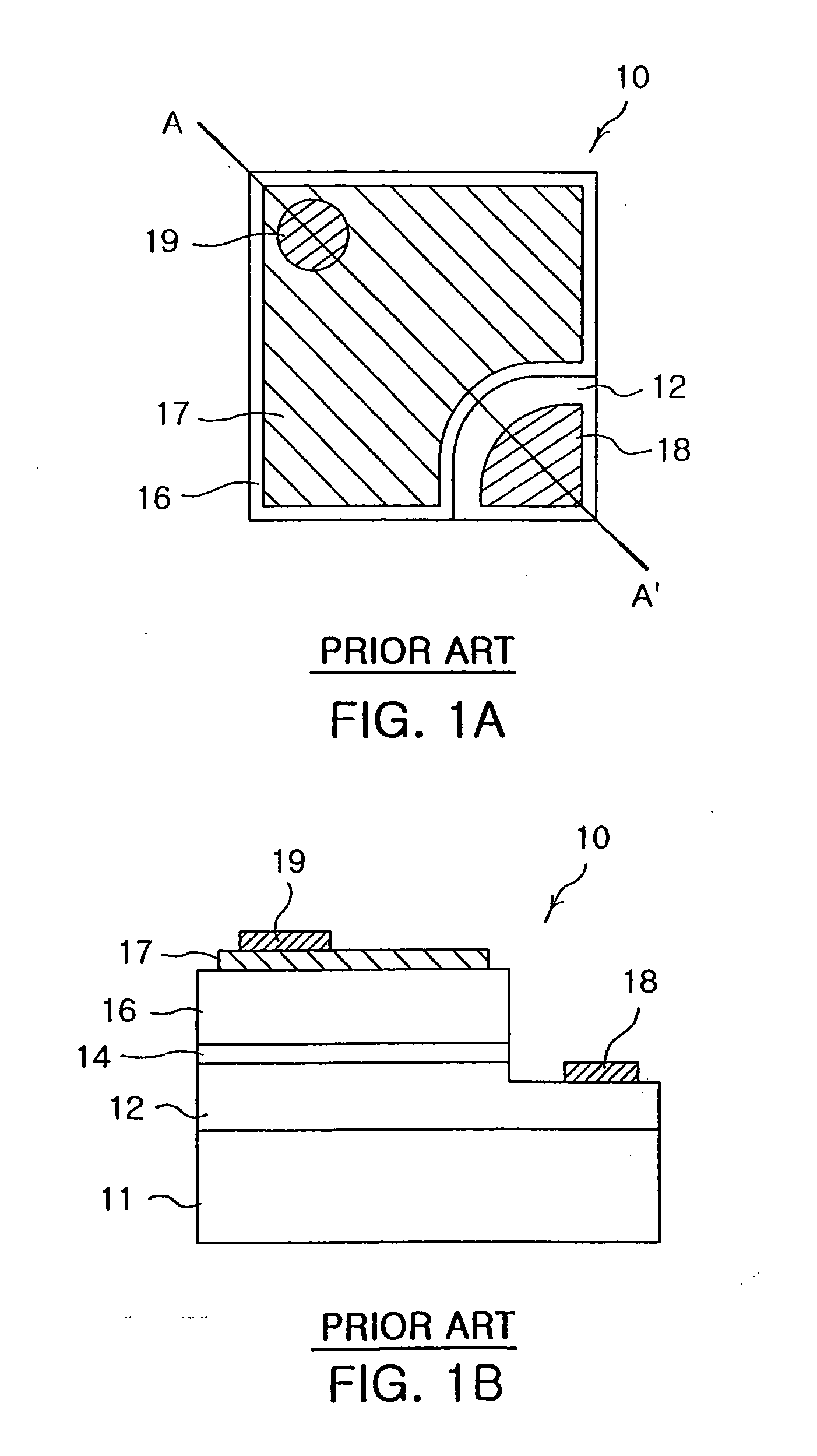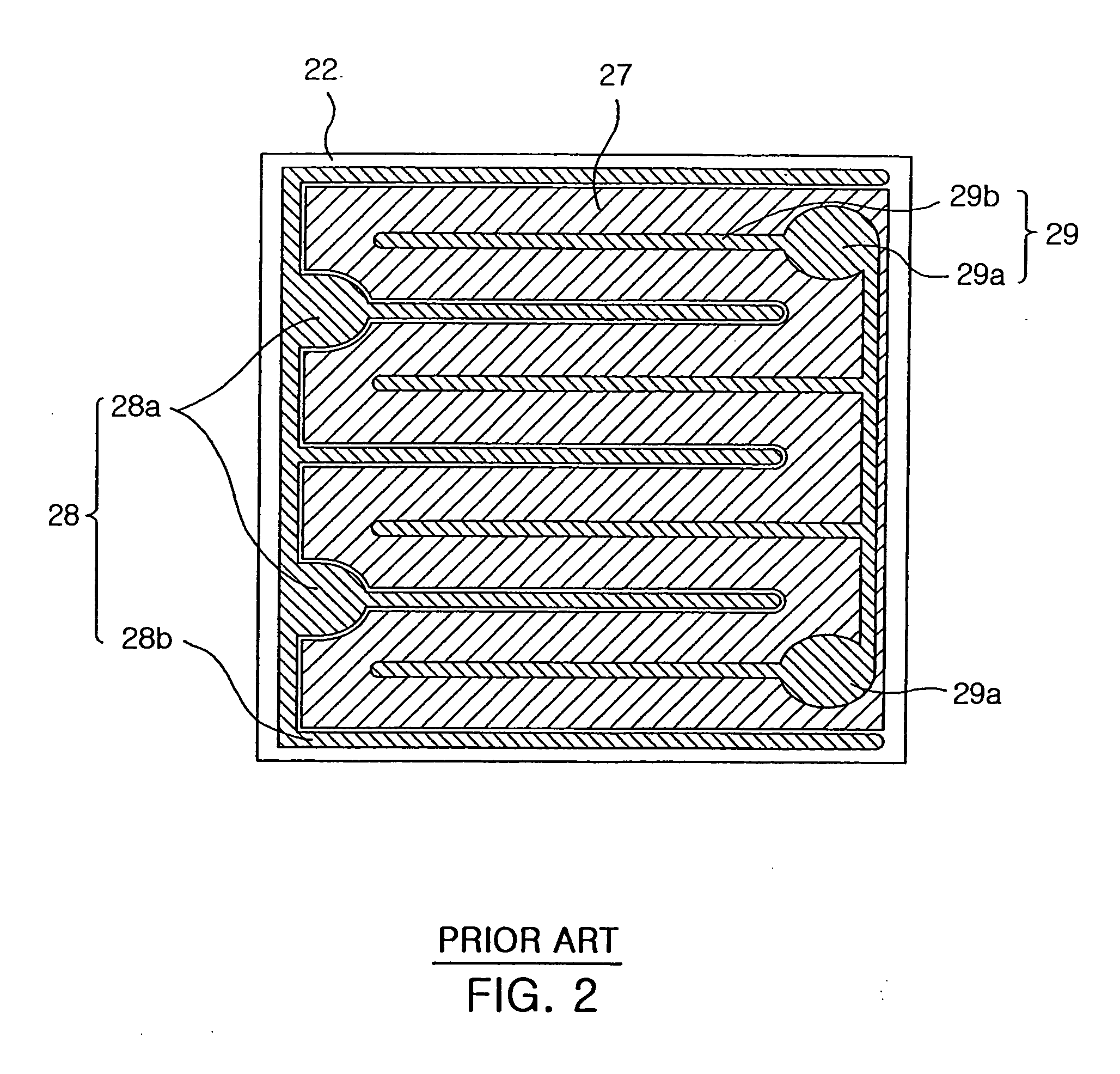Nitride semiconductor light emitting device
- Summary
- Abstract
- Description
- Claims
- Application Information
AI Technical Summary
Benefits of technology
Problems solved by technology
Method used
Image
Examples
example
[0073] In order to examine those improved characteristics of the nitride semiconductor LED of the invention, three nitride semiconductor LED structures were fabricated with same component and thickness on rectangular sapphire substrates of approximately 1000×1000 μm size.
[0074] First two of the LED structures were fabricated into the nitride semiconductor LEDs of the electrode structures illustrated in FIGS. 2 and 3a, respectively. The conventional nitride semiconductor LEDs fabricated like this are illustrated in FIGS. 9a and 9b, respectively. The rest of the LED structures was fabricated to have the same electrode structure as in FIG. 8a. The nitride semiconductor LED of the invention fabricated like this is illustrated in FIG. 9c.
[0075] Although the LED of the invention shown in FIG. 9c has electrode patterns similar to those of the conventional LED shown in FIG. 9b, it has an n-electrode formed on a central area and a p-electrode formed on the upper outer periphery to surround...
PUM
 Login to View More
Login to View More Abstract
Description
Claims
Application Information
 Login to View More
Login to View More - R&D
- Intellectual Property
- Life Sciences
- Materials
- Tech Scout
- Unparalleled Data Quality
- Higher Quality Content
- 60% Fewer Hallucinations
Browse by: Latest US Patents, China's latest patents, Technical Efficacy Thesaurus, Application Domain, Technology Topic, Popular Technical Reports.
© 2025 PatSnap. All rights reserved.Legal|Privacy policy|Modern Slavery Act Transparency Statement|Sitemap|About US| Contact US: help@patsnap.com



